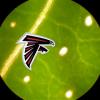Sarahb3339, is this for the United States? If so, for FDA, the rule is as follows:
If you're adding that specific nutrient (Class I nutrient, defined in (3)(i)), then it must be at least 100% of the amount claimed on the label [21 CFR 101.9(g)(4)(i)]. If it a naturally occurring nutrient (Class II nutrient, defined in (3)(ii)), then the nutrient content must be at least 80% of the value declared on the label [21 CFR 101.9(g)(4)(ii)].
(3) Two classes of nutrients are defined for purposes of compliance:
(i) Class I. Added nutrients in fortified or fabricated foods; and
(ii) Class II. Naturally occurring (indigenous) nutrients. When a nutrient is naturally occurring (indigenous) in a food or an ingredient that is added to a food, the total amount of such nutrient in the final food product is subject to class II requirements, except that when an exogenous source of the nutrient is also added to the final food product, the total amount of the nutrient in the final food product (indigenous and exogenous) is subject to class I requirements.
(4) A food with a label declaration of a vitamin, mineral, protein, total carbohydrate, dietary fiber, soluble fiber, insoluble fiber, polyunsaturated or monounsaturated fat shall be deemed to be misbranded under section 403(a) of the Federal Food, Drug, and Cosmetic Act (the act) unless it meets the following requirements:
(i) When a vitamin, mineral, protein, or dietary fiber meets the definition of a Class I nutrient, the nutrient content of the composite must be formulated to be at least equal to the value for that nutrient declared on the label.
(ii) When a vitamin, mineral, protein, total carbohydrate, polyunsaturated or monounsaturated fat, or dietary fiber meets the definition of a Class II nutrient, the nutrient content of the composite must be at least equal to 80 percent of the value for that nutrient declared on the label. Provided, That no regulatory action will be based on a determination of a nutrient value that falls below this level by a factor less than the variability generally recognized for the analytical method used in that food at the level involved.
Percent DV is calculated using the table in 21 CFR 101.9( c)(8)(iv) based on the intended consumer of the product--i.e., whether it's an adult, infant, etc.
Matthew














